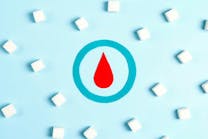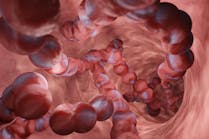Cardiovascular diseases (CVDs) are the number one cause of death in the United States and globally.1,2 In 2011, chest pain and related symptoms were the third-leading principal reason for Emergency Department (ED) visits in the U.S., affecting 7,169,000 of more than 136 million patients treated.3
Not every patient having a cardiac event suffers from chest pain, which complicates the diagnosis. While chest pain or discomfort is the most commonly known heart attack symptom, many patients instead present with atypical symptoms that can mimic the flu or a pinched nerve, such as nausea, fatigue, lightheadedness, or numbness in the arm, jaw, or back.4 Patients presenting with atypical symptoms may have diagnoses delayed in part due to ED caseloads. The annual number of ED visits has increased by 23% in just 10 years.5
All ED cases of suspected cardiac myocardial infarction (MI) can be life-threatening, because if a coronary artery is blocked, the heart muscle loses critical blood flow and begins to die after 30 to 60 minutes. During this “golden hour” of a heart attack, it is often said that “time is muscle.” Every minute of delay in treatment after that hour means more heart muscle will die.6
To optimize patient outcomes, early detection, risk stratification, and placing patients on the correct clinical treatment pathway is critical for this most threatening disease. The development of more sensitive and specific serological biomarkers (and more precise imaging techniques) allows detection of ever-smaller amounts of myocardial necrosis. High-sensitivity troponin assays are improving the diagnostic accuracy and rapid detection of myocardial infarction.7
Cardiac troponins are regulatory proteins within the muscular layer of the heart wall. They are released into the circulation when damage to cardiac muscle cells has occurred. Serum troponin is a very sensitive marker of myocardial injury and is necessary for establishing a diagnosis of MI.7
According to National Academy of Clinical Biochemistry (NACB) Guidelines, assays for cardiac biomarkers should strive for a total imprecision (%CV) of <10% at the 99th percentile reference limit.8 Guidelines, or critical-care pathways, are common in diagnosis and treatment. These strategies result in:
- Rapid initiation of crucial therapy in patients with high-risk acute coronary syndromes
- Risk stratification of clinically low-risk patients into those requiring admission and those who can be safely discharged and managed as outpatients.9
Advances in immunoassay technologies and the international adoption of traceable troponin calibration standards have resulted in development of troponin assays with unprecedented analytic sensitivity and precision. A rise or fall in serial high-sensitivity troponin levels strongly supports an acutely evolving cardiac injury such as, most commonly, acute myocardial infarction. High-sensitivity troponin showed positive results before troponin in 64% of samples in one study, allowing diagnosis to be made hours earlier.10 The ability to provide earlier detection of MI may improve outcomes and patient satisfaction, because high-risk patients are triaged sooner in the emergency setting.
References
- National Vital Statistics Report, U.S. Department of Health and Human Services, CDC. 61:6, p6. Oct 10, 2012. http://www.cdc.gov/nchs/data/nvsr/nvsr61/nvsr61_06.pdf. Accessed January 4, 2013.
- Cardiovascular diseases Fact Sheet #317, World Health Organization, Sept 2012. http://www.who.int/mediacentre/factsheets/fs317/en/. Accessed January 4, 2013.
- National Hospital Ambulatory Medical Care Survey: 2009 Emergency Department Summary Tables, pg 12. http://www.cdc.gov/nchs/data/ahcd/nhamcs_emergency/2009_ed_web_tables.pdf . Accessed January 4, 2013.
- Heart Attack Symptoms in Women, Sept 5, 2012. American Heart Association. http://www.heart.org/HEARTORG/Conditions/HeartAttack/WarningSignsofaHeartAttack/Heart-Attack-Symptoms-in-Women_UCM_436448_Article.jsp. Accessed January 4, 2013.
- Niska R, Bhuiya F, Xu J. National Hospital Ambulatory Medical Care Survey: 2007 Emergency Department Summary. National Health Statistics Reports; No. 26. Hyattsville, MD: National Center For Health Statistics; 2010.
- Canto J, et al. Association of age and sex with myocardial infarction symptom presentation and in-hospital mortality. JAMA. 2012 Feb;307(8):813-822.
- Daubert M, Jeremias A. The utility of troponin measurement to detect myocardial infarction: review of the current findings. Vasc Health Risk Manag. 2010;6:691–699.
- Laboratory Medicine Practice Guidelines: Biomarkers of Acute Coronary Syndromes and Heart Failure. Edited by R. Christenson. NACB. Copyright 2007 by the American Association for Clinical Chemistry, Inc.
- Society of Cardiovascular Patient Care Accreditation. http://scpcp.org/services/cpc/. Accessed December 5, 2012.
- Mahajan V, Jarolim P. How to interpret elevated cardiac troponin levels. Circulation. 2011;124:2350-2354.






